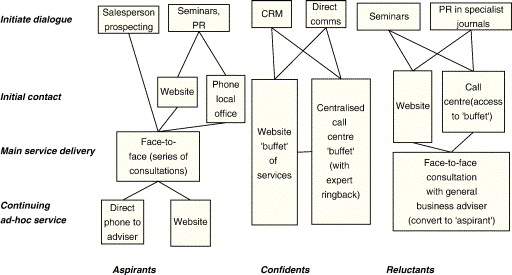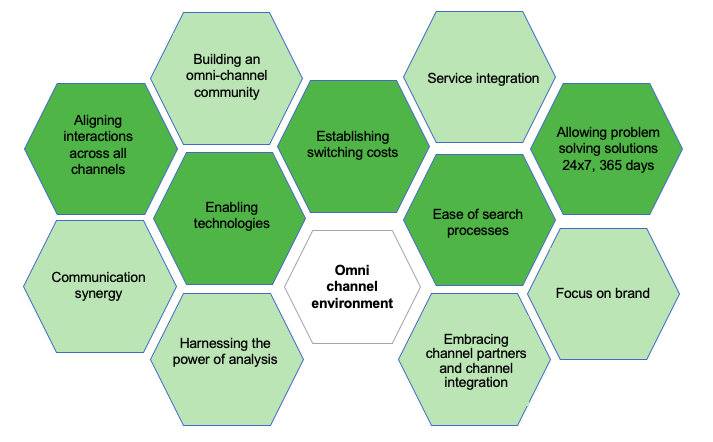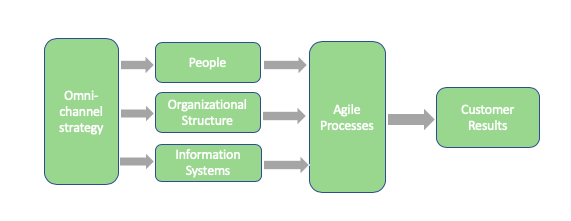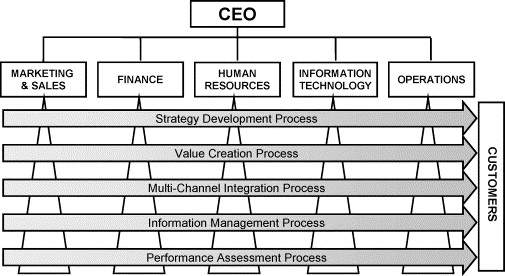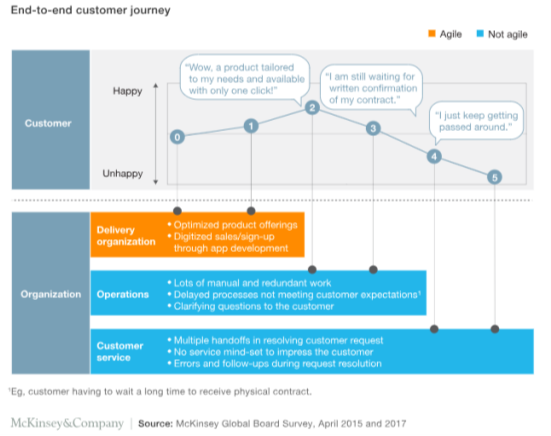Royal Institute of Chartered Surveyors (RICS)
| ✅ Paper Type: Free Essay | ✅ Subject: Organisations |
| ✅ Wordcount: 3296 words | ✅ Published: 23 Sep 2019 |
Royal Institute of Chartered Surveyors (RICS) is a professional body that promotes and enforces the highest international standards in valuation, management and development of land, real estate, construction and infrastructure, globally. As of November 2018, RICS has qualified approximately 108764 individual professionals around the world.
RICS is not only a growing professional body aspiring to offer qualifications and standards of global relevance and application, it also aims to pioneer new ways of pursuing its role. For example, the company has opened two schools in India to establish an enduring profession in a country with perhaps one of the largest built environment challenges in the world. RICS also has collaborated with 150 like-minded bodies globally, to set a framework of international standards for its sector.
RICS’ products and their go-to-market strategy:
Real estate consisting a wide range of surveying activities, the number of products and services provided by RICS to support its registered and unregistered surveyors, are numerous. For example, BCIS, company’s Building cost information services, which generates the maximum revenue for the company, is a product that provides cost and price information to the surveyors, consultants and contractors to produce specific estimates for option appraisals, cost planning, benchmarking and early cost advice, itself includes about 30 sub-products also with indices that provide comparisons of costs from years ago to the present day. Similarly, there are other services such as Trainings, Events, Sponsorships, iSurv (online resource for people preparing to become a chartered surveyor) and Dispute Resolution Services.
The company has four account management teams to handle and sell this complex mix of products and services, each team catering to different kind of customers. The National account managers’ team is responsible for handling big corporates that are into real estate and require RICS’ support for their teams. The Regional account managers cater to smaller companies within England – their direct interaction is generally with the directors or owners of these small firms. On the contrary, internal account managers’ team deal with telephone based accounts which do not generally require them to visit the client. Similarly, the inbound teams are responsible either acquiring clients through web and telephone inquiries, or directing these inquiries to relevant account managers.
The product/service portfolio that RICS has, it is required to cater not only to the businesses but also to the consumers in the industry. Hence, the sales channels that company adopts for each of its products vary. On one hand, where the Marketing team gets new leads and re-subscriptions through its digital activities, the account management team works on getting new prospects through networking (conferences and trainings) – just like developing prospective relationships with reference to customer portfolio matrix (Rogers, 2007) and LinkedIn’s Sales navigation tool on the other.
Challenges:
Evidently, with wide range of B2B yet B2C products and services that RICS provides, the company has multiple channels of getting to its target customers. With growing markets and the world moving from traditional selling to the internet, most organizations are trying to meet customer expectations by providing them a seamless experience.
- One of the challenges RICS faces is communicating its customers’ troubles to its Product management team through the account managers who are a face of the business, and are both directly and indirectly responsible for providing the best customer experience.
- Secondly the marketing team is facing challenges with it’s inbound/email marketing processes where it has to work on numerous tasks manually which could easily be automated.
- Finally, RICS faces numerous complains about their products which are not handled very well by their customer service (over phone calls) and in turn lead to negative social media comments and feedback for the company.
Although RICS is making products and services available to business markets through a wide range of multiple channels, it is also required to provide increased level of customer service.
Multi-channel routes-to-market:
Tremendous growth in the number of consumers, using multiple channels which also include most internet based channels, has offered new break for organizations to engage with customers across multiple platforms at the time and place of their choice (Laroche et al., 2013; Straker et el., 2015). Most business to business companies these days have their own Salesforce or account management channels, distribution channels, online channels, and their own call centres too just so that they are able to provide a seamless journey to their customers.
According to an article from Industrial Marketing Management (Wilson & Daniel, 2007), the development of e-commerce, increasing number of call centres and growing demands of the customers are leading to rattling change in most B2B market spaces. Due to which the organizations shift the combinations of channels, that they offer to the customer, looking for advantage in terms of reducing costs and improve customer satisfaction. It is suggested that the managers should put together resources in new ways, gain additional resources and dispose the unnecessary ones on a regular basis to compete successfully. As per the strategic management literature these activities are termed as “dynamic capabilities” (Wilson & Daniel, 2007).
The findings and discussions of the article (Wilson & Daniel, 2007) suggest that utilizing the competitive possibilities of channel strategy to its best requires that the organization must not only have a mechanism to review it but also to reform the traditional route to market rather than just take it for granted. The multi-channel strategy of cases studied in the paper suggest that the attention has moved away from straightforward new channels to innovative combinations of channels targeted at specific customer groups.
One of the channel strategies, which turned out to be very similar to RICS’ is the Figure 1 below:
|
|
|
Figure 1. Channel strategy by segment |
Comparing the segments of channel strategy in Figure 1 to that of RICS’, ‘Aspirants’ are the ones who use only a few products of RICS’ for example small firms handled by regional account managers that have a potential of growing or people who aspire to become chartered surveyors. ‘Reluctant’ are the ones who wish to use the products but probably believe that the product or service is highly priced and are sceptical about the kind of value it would deliver to them. ‘Confidents’ however are the key accounts or businesses that already RICS’ loyal.
The dynamics capabilities approach also speaks about integration of processes of all departments in the company with IT which will support multi-channel customer relationships and provide a platform for the companies to experiment with playing different roles in customer relationship, and communicating within the teams through shared IT systems. It is also necessary that there be an organizational structure which balances the need for integration and innovation, in case of RICS, there should not only be a synergy between the Sales and Marketing team but also other teams such as product management and customer service which would play an important role in a channel strategy.
Multi-channel to Omni-channel:
An important criticism of multi-channel marketing and Integrated Marketing communications is, reality of organizational silos between sales and marketing teams that make finding a compact solution difficult, with reference to how fluctuating customer channel integration and priorities in communication strike a customer’s journey to purchase (Cao, 2014; Peltier et al., 2006). The evolution from multi-channel to Omni-channel orientation is however considered as a means through which sales and marketing can together enhance customer engagement by means of communication synergy as a unified brand experience (Hansen and Sia, 2015). The core of Omni-channel marketing means that the whole set of available tools and platforms are all part of a cloud or single-choice environment rather than considering varied channels for communication between the customer and supplier firm choices.
In the article, Omni-channel research framework in the context of personal selling and sales management: A review and research extensions from the Journal of Research in Interactive Marketing, (Cummins, Peltier, & Dixon, 2016) expanded on the work from Journal of Retailing (Verhoef et al., 2015) Omni-channel marketing, in the context of sales is defined as “Synergetic integration of customer touch points and communication opportunities for the purpose of creating a unified brand experience regardless of channel, platform or stage in the selling process”.
Scholars and practitioners (Hansen and Sia, 2015;Herhausen et al, 2015; Piotrowicz & Cuthbertson, 2014; Verhoef et al., 2015) have delineated a number of conceptual and strategic elements that are critical for success in an Omni-channel environment (Figure 2).
|
|
|
Figure 2: Critical elements for success in a Omni-channel environment |
Implementing Omni-channel Strategy:
In an article, Implementing Omni-channel Strategies: The Success Factor of Agile Processes from Advances in Management & Applied Economics, the authors (Hoogveld & Koster, 2016) conceptually focused on researches on Omni-channel management success and have identified five organizational/facilitating factors for the success of Omni-channel management, and they are, strategy, organizational structure, systems, processes and people.
- Integrating multi-channel with business strategy:
In an article from Industrial Marketing Management, (Payne & Frow, 2004), the authors suggest that a company’s multi-channel strategy should be integrated with the customer relationship management strategy and both should consistently align with the overall business strategy. However, it is argued that a business strategy is not sufficiently linked to multi-channel marketing and a strong support is found about the multi-channel systems making a huge contribution to a firm’s performance when they are properly aligned with its business strategy (Kabadayi et al, 2007).
- Cross-functional collaboration:
Considering cross-functional collaboration from customer centricity perspective, it is proposed that “change is achieved by altering behaviour patterns and helping employees understand how the new behaviours benefit them and improve performance” (Shah et al, 2006). Company’s culture, people’s attitude and behaviour and managerial systems create superior customer value (Guenzi & Troilo, 2007). It is confirmed in a study (Valos, 2008) that the internal structures, processes and organizational culture are required to be reconstructed for implementation of complex multichannel marketing.
- Customer centric organizational culture:
Reconfiguration of the organizational structure plays a key role in the success of leadership for multichannel marketing (Hoogveld & Koster, 2016). An article (Pentina & Hasty, 2009) from Journal of Marketing Channels supports higher standards of multichannel coordination and integration which can provide alliance that will aid all the channels, and positively affect the bottom line at the same time.
- Integrating customer data across channels:
Access to customer data across all channels helps understand the customer’s journey and avoids chaos between the channels. In the International journal of retailing and distribution management, it is agreed that relationship management applications help in building and retaining long-term association with customers (Ganesh, 2004). It is therefore proposed that, to analyse cross-channel consumer behaviour, which will help make strategic and tactical choices, methods should be developed to identify and integrate data from various channels (Rangaswamy & Van Bruggen, 2005). It is also stressed that company’s ability to gather and deploy customer information from multiple channels and integrate it with relevant information helps them execute multichannel integration better (Payne & Frow, 2004).
- Continuous improvement in processes:
It is very important that the processes in Omni channel operations involve continuous improvement. To improve performance within the departments, it is proposed that it’s extremely important there the process information be shared among them (Biemans, Makovec Brenčič, & Malshe, 2010). Because, managing an Omni channel operation is dynamic and complex by nature, it is considered well suited for adoption of continuous improvement processes.
Conceptual Framework and Hypothesis for Omni channel strategy:
In a literature study by (Hoogveld & Koster, 2016), they question the impact of facilitating organizational factors on continually improving performance. They elaborate this in a conceptual model, with the following hypothesis:
- Cooperation between people responsible for individual channel
- Coordination within the organisation
- Integrated customer data from information systems across the Omni channel operation
- Agile processes improving the customer results
|
|
|
Figure 3: Conceptual Model by Hoogveld and Koster, 2016 |
The definitions of the variables in the conceptual model are mostly based on the definitions as used by the European Foundation for Quality Management (EFQM) (Hoogveld & Koster, 2016):
- People: Interactions between the individuals within the organization and outside the organization (with stakeholders) – on the basis of specific collection of values they share and in a way they coordinate;
- Organizational structure: coordination and allocation of tasks within the organizations in a way that the achieve their goals;
- Information systems: management of information to build capabilities within the organization and support decision making.
- Agile processes: the set of activities that add value by transforming inputs into outputs, enabling the organisation to adapt in a timely way and continually improve its performance through incremental change;
- Customer results: the outcomes for customers that demonstrate the effectiveness of the organisation’s deployment of its strategy and processes.
The implementation of lean and agile is lately being adapted in marketing, creating an operation that incrementally develops the strategy by experimenting (de Swaan Arons, van den Driest, & Weed, 2014), and is supremely significant for the dynamic and complex Omni channel operations. The usage of the lean methodology that combines elements of both agile and lean results in fewer failures when compared to traditional methods (Blank, 2013).
Conclusion and Recommendations:
While we know that RICS already has multiple channels to get to the market, with the stated literature review in this report, it’s suggested that RICS follows the points stated below to overcome its present challenges
- RICS’ multi-channel strategy along with its Customer relationship management strategy must be aligned with that of its business strategy (Payne & Frow, 2004). Its important there be synergy among teams about the goals of the organisation – basically about the kind of service the organization aims to provide to its customers.
- The firm must aim at improving the process continuously across the department and adapt agile methodology, which is relevant to the dynamic nature of sales and marketing methods – the email marketing process must be fully automated and time and resources must be channelled towards developing an efficient customer service.
- The Marketing team must have a new Marketing automation tool, that is integrated with both CRM and Complaints management system. This new Marketing automation tool must include features for Email marketing, Mobile Marketing and Social Media marketing that will help the team optimize its posts, by creating and activating triggers for follow up emails and text messages. The new tool (may be Marketo or Eloqua) must also have features where it can show if the leads have read/opened/clicked on the emails – which can give valuable insights to the Marketing team about their campaigns.
-
There must be a cross functional collaboration within the organization (Payne & Frow, 2004) in a way that it helps in keeping the synergy among the teams, and also makes RICS a customer centric organization at the same time.
|
|
|
Figure 4: CRM as a cross-functional activity (Payne and Frow, 2004) |
- As RICS is already using Microsoft Dynamics for its Customer Relationship Management system, it must also get an access to the product’s Complaints Management feature – which should contain the complaints from direct customers, through phone calls as well as social media. This will greatly help RICS get efficient customer insights. The company must regard this feature as an integral part of their business, which can help them acquire new customers, upsell service to existing customers.
- Access to this system should not just be given to Sales and Marketing teams but also to other teams across the organization (as shown in Figure 4), like the IT/Operations or Product development team for that matter should understand what a customer is expecting out of the company – the organization together should work towards providing a seamless experience to the customers.
- It is important that the customer Service team (that responds to inquiries from various clients) have enough knowledge about the products and be trained to provide a solution to the clients and not just answer to their questions. For reference, a recent report from McKinsey (Jacobson et al., 2019) on “Bringing agile to customer care” talks about how offering superior end-to-end customer journeys require smooth integration of customer care with other parts of business:
|
|
|
Figure 5: End-to-end customer journey |
References:
- Biemans, W. G., Makovec Brenčič, M., & Malshe, A. (2010). Marketing-sales interface configurations in B2B firms. Industrial Marketing Management. https://doi.org/10.1016/j.indmarman.2008.12.012
- Blank, S. (2013). Why the lean start-up changes everything. Harvard Business Review. https://doi.org/10.1109/Agile.2012.18
- Cao, L. (2014). Business Model Transformation in Moving to a Cross-Channel Retail Strategy: A Case Study. International Journal of Electronic Commerce. https://doi.org/10.2753/JEC1086-4415180403
- Cummins, S., Peltier, J. W., & Dixon, A. (2016). Omni-channel research framework in the context of personal selling and sales management: A review and research extensions. Journal of Research in Interactive Marketing. https://doi.org/10.1108/JRIM-12-2015-0094
- de Swaan Arons, M., van den Driest, F., & Weed, K. (2014). The ultimate marketing machine. Harvard Business Review. https://doi.org/10.1109/HICSS.2013.568
- Ganesh, J. (2004). Managing customer preferences in a multi-channel environment using Web services. International Journal of Retail & Distribution Management. https://doi.org/10.1108/09590550410524920
- Guenzi, P., & Troilo, G. (2007). The joint contribution of marketing and sales to the creation of superior customer value. Journal of Business Research. https://doi.org/10.1016/j.jbusres.2006.10.007
- Hansen, R. and Sia, S. (2015). Hummel’s Digital Transformation Toward Omni-channel Retailing: Key Lessons Learned. MIS Quarterly Executive, 14(2), pp.51-66.
- Herhausen, D., Binder, J., Schoegel, M., & Herrmann, A. (2015). Integrating Bricks with Clicks: Retailer-Level and Channel-Level Outcomes of Online-Offline Channel Integration. Journal of Retailing. https://doi.org/10.1016/j.jretai.2014.12.009
- Hoogveld, M. and Koster, J. (2016). Implementing Omni-channel Strategies The Success Factor of Agile Processes. Advances in Management & Applied Economics, 6(2), pp.25-38.
- Jacobson, R., Jautelat, S., Raabe, J. and Wienke, L. (2019). Bringing agile to customer care. [online] McKinsey & Company. Available at: https://www.mckinsey.com/business-functions/operations/our-insights/bringing-agile-to-customer-care [Accessed 15 Feb. 2019].
- Kabadayi, S., Eyuboglu, N., & Thomas, G. P. (2007). The Performance Implications of Designing Multiple Channels to Fit with Strategy and Environment. Journal of Marketing. https://doi.org/10.1509/jmkg.71.4.195
- Laroche, M., Kiani, I., Economakis, N., & Richard, M. O. (2013). Effects of multi-channel marketing on consumers’ online search behavior: The power of multiple points of connection. Journal of Advertising Research. https://doi.org/10.2501/JAR-53-4-431-443
- Neslin, S. A., & Shankar, V. (2009). Key Issues in Multichannel Customer Management: Current Knowledge and Future Directions. Journal of Interactive Marketing. https://doi.org/10.1016/j.intmar.2008.10.005
- Payne, A., & Frow, P. (2004). The role of multichannel integration in customer relationship management. Industrial Marketing Management. https://doi.org/10.1016/j.indmarman.2004.02.002
- Peltier, J., Schibrowsky, J. A., Schultz, D. E., & Zahay, D. (2006). Interactive IMC: The relational-transactional continuum and the synergistic use of customer data. Journal of Advertising Research. https://doi.org/10.2501/S0021849906060193
- Pentina, I., & Hasty, R. W. (2009). Effects of multichannel coordination and e-commerce outsourcing on online retail performance. Journal of Marketing Channels. https://doi.org/10.1080/10466690903188021
- Piotrowicz, W., & Cuthbertson, R. (2014). Introduction to the Special Issue Information Technology in Retail: Toward Omnichannel Retailing. International Journal of Electronic Commerce. https://doi.org/10.2753/JEC1086-4415180400
-
Rangaswamy, A., & Van Bruggen, G. H. (2005). Opportunities and challenges in multichannel marketing: An introduction to the special issue. Journal of Interactive Marketing. https://doi.org/10.1002/dir.20037
Rogers, B. (2013). Rethinking sales management. Hoboken, N.J.: Wiley. - Shah, D., Rust, R. T., Parasuraman, A., Staelin, R., & Day, G. S. (2006). The path to customer centricity. Journal of Service Research. https://doi.org/10.1177/1094670506294666
- Straker, K., Wrigley, C., & Rosemann, M. (2015). Typologies and touchpoints: Designing multi-channel digital strategies. Journal of Research in Interactive Marketing, 9(2), 110–128. https://doi.org/10.1108/JRIM-06-2014-0039
- Valos, M. J. (2008). A qualitative study of multi-channel marketing performance measurement issues. Journal of Database Marketing & Customer Strategy Management. https://doi.org/10.1057/dbm.2008.22
- Verhoef, P. C., Kannan, P. K., & Inman, J. J. (2015). From Multi-Channel Retailing to Omni-Channel Retailing. Introduction to the Special Issue on Multi-Channel Retailing. Journal of Retailing. https://doi.org/10.1016/j.jretai.2015.02.005
- Wilson, H., & Daniel, E. (2007). The multi-channel challenge: A dynamic capability approach. Industrial Marketing Management, 36(1), 10–20. https://doi.org/10.1016/j.indmarman.2006.06.015
APPENDIX – LITERATURE REVIEW
Cite This Work
To export a reference to this article please select a referencing stye below:
Related Services
View allDMCA / Removal Request
If you are the original writer of this essay and no longer wish to have your work published on UKEssays.com then please click the following link to email our support team:
Request essay removal